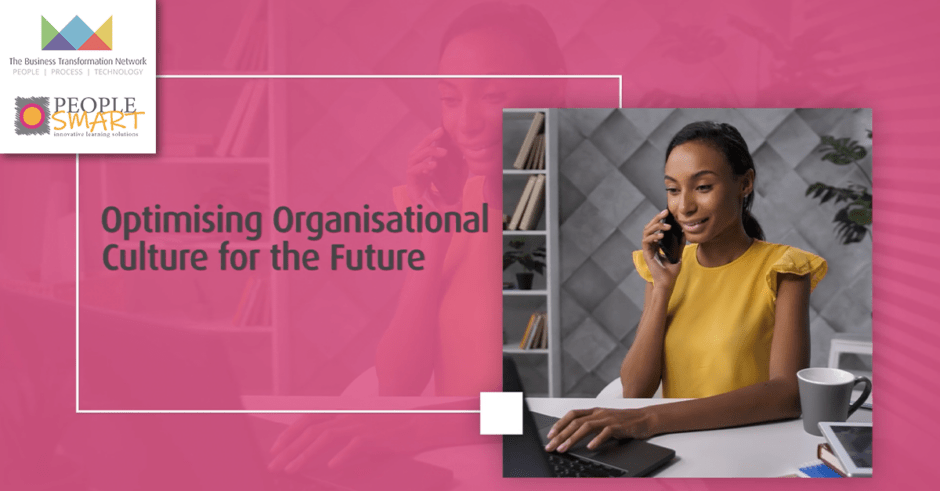The nature of a culture can make or break an organisation. The forced move to a virtual environment during the pandemic, with the pivot now to a blended/hybrid workplace has resulted in leaders having to rethink how they build their cultures and how to optimising their organisational culture for the future.
The BTN recently partnered with PeopleSmart, who provide innovative learning solutions to organisations focusing on leadership and people development, for an exclusive VIP roundtable with executive People & Learning leaders.
The conversation was an open and interactive session, which brought about the following takeaways:
Digital must be a major part of how we teach people
The pandemic has undoubtedly accelerated many organisations’ learning and development plans with the role of digital now playing a pivotal role in how people navigate their personal and professional growth. The role of digital has not just had an impact on the way we use technology but has had a direct impact on how we use the face to face environment. Face to face learning now needs to be reimagined and completely different. The digital environment can now replicate what the face-to-face environment used to accomplish, so we must make face to face more nurturing through workshops and interactivity. Face to face experiences must have more human aspects to them and potentially start to incorporate physical activities which shift participation from sharers to a participant.
Information sharing and teaching can be truly interactive and engaging but this is possible not just in person but also digitally. We should look at how we can use time effectively and if a role is suitable for the office, then we utilise that method, if it is suitable for remote, then we reap the benefits there.
The role of technology will undoubtedly play a key factor in the success of communications but with organisations now starting to hire employees who are completely remote, how can we ensure we can fully integrate them and create culture? How can we make teams collaborate with each other as much as individuals within the team collaborate?
Trust makes people work harder, we must Trust our leaders
Culture is largely sourced from the leadership itself with regard to attitudes etc. Leaders help to inspire ownership and accountability. Our future cultures must be built on fairness and empathy, of which both have a direct link to trust.
Fairness has become a common conversation for employees who feel that they may be criticised for not being ‘visible’ in the office if they work from home more often. We need to trust our employees and set a precedent that you don’t have to come into the office to be ‘noticed’. Communication tools must be used effectively to ensure we can reap the benefits of the hybrid environment and lead effectively.
There is no silver bullet to hybrid working or hybrid leadership, the journey we are on is all about learning. If we don’t see each other physically as often as we used to, how do we frame what a team is doing with regard to a wider purpose and belonging? To move forwards and truly develop a culture that our organisation is proud of, we need leaders who help to embed the culture we want to achieve.
Interactions, not just Transactions
Organisational culture is currently on a journey of discovery whereby we don’t know what the organisation of the future exactly looks like but we have a huge opportunity to reimagine and reshape what we want our future culture to be.
The relationship between employees and leaders will evolve as organisations become more reliant on the messaging coming through a leader rather than as part of corporate communications. Our leaders, therefore, need to be rethinking their softer skills and the interactions they have with their teams. For example, leaders must become more self-aware so they can listen more deeply to their teams when they have fewer interactions during a week than they would have done in an office.
Motivating your team isn’t about being super nice, it is sometimes simply about giving people space and ensuring you are being supportive. The interactions we now have with our teams are more frequently becoming within someone’s bubble of comfort in their own home. We need to ensure these interactions are customised for the individual and not team-based.
As leaders, we are there to inspire confidence and be relational, rather than simply transactional. Our emotional intelligence as leaders will undoubtably be tested over the coming months and years but we can co-create the cultures we want to achieve with our employees in an active way. This is the People’s side of the organisations’ chance to speak up, have a strong voice and have a really positive impact.
The future of the top teams and leaders is going to be through blended communications so we need to understand the best methods to use at which opportunity. As leaders, our simple question will always be ‘how can we stay attractive as a culture’? The answer is unknown but the more we understand our employees and the more our leaders are on board, we will be able to influence our organisational culture in a positive way.

